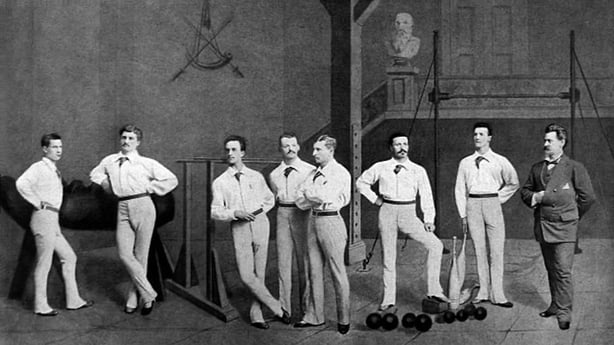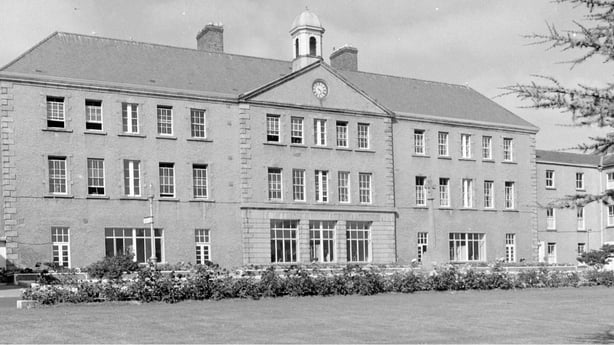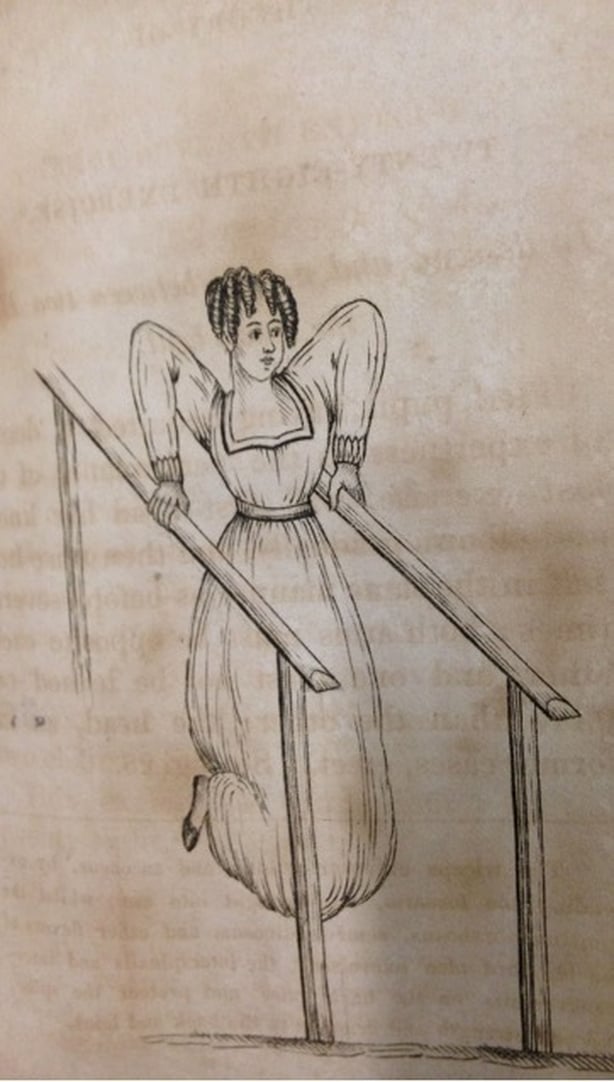Analysis: Ireland's first recorded gym owner and operator was a pivotal figure in the nation’s fitness history
By Conor Heffernan, Ulster University
Roughly 10% of people Ireland are members of a gym, while many more exercise at home or in public spaces. While this membership and exercise takes a variety of forms, it is undeniable that gyms are a significant part of the lives of a significant portion of the population. They are spaces of socialisation, education and, of course, exercise. Importantly, gyms force people from different walks of life to interact, which may not happen elsewhere.
It is for this reason that some have labelled the gym as a significant 'third place’ between the home and the workplace. First coined by American sociologist Ray Oldenburg in 1989, the ‘third place’ refers to locations where people regularly meet and socialise. Rather than trivial, they are vital parts of what it means to be human. So when did Ireland become a nation of gym-goers, or, less abstractly, when did the first gym open in Ireland? It did not come in the 1960s or 1980s as some may believe, but, in fact, the 1820s.
The first Irish gym
How and why people train changes dramatically over time and, the fitness industry is defined by rapid changes and oftentimes, fad diets or programs. Indeed, my latest book focuses on the explosion of exercise trends in the nineteenth century. It was during this period that Ireland, and a great deal of Western Europe, experienced a new surge of interest in gymnasiums and physical activity.
We need your consent to load this rte-player contentWe use rte-player to manage extra content that can set cookies on your device and collect data about your activity. Please review their details and accept them to load the content.Manage Preferences
From RTÉ Radio 1's Brendan O'Connor, DCU's Prof Niall Moyna shares his tips on getting back to exercise
This interest was fuelled by two trends. The first was a new educational interest in training the body as a means of providing a holistic education. Oftentimes referring to French philosopher Jean Jacque Rousseau, and his influential multi-volume work, Emile, a new generation of physical educationalists emerged in the late 1700s promising to strengthen mind and body.
At the same time the French Revolution, and the subsequent Napoleonic Wars, heightened the need to physically train military troops among politicians and military leaders. One example of this was the Turnverein gymnastic system, created by Friedrich Ludwig Jahn in the 1820s following Prussia’s defeat to Napoleon. So incensed was Jahn that he created a gymnastics system designed to strengthen Prussian men for future conflict. Jahn, and others like him, helped inform a wandering group of physical educationalists who travelled Europe offering their services to schools or militaries.

The operator of Ireland’s first gym, Monsieur J.A. Beaujeu, was one such individual. A fencing teacher, who came to Ireland from Spain, Beaujeu taught gymnastics in Dublin and Liverpool during the early 1820s. In 1825 he was officially hired by the Royal Hibernian Military School in the Phoenix Park, Dublin. This marked the first official gym in Ireland.
During his time at the School, Beaujeu and his wife, Madame Beaujeu, opened a private gymnasium for men and women at 39 Dawson Street in Dublin. At the School, the Beaujeus trained the children of soldiers fighting in the British military. In their Dawson Street 'Academy', their clientele were upper-class men and women seeking to improve themselves physically.

Remarkably, we know exactly how people trained in the Beaujeus’ gym. In 1828 the Beaujeus published A Treatise on Gymnastic Exercises, which can also be listed as Ireland’s first fitness book. Dedicated solely to training women, the Treatise cited many exercises familiar today such as pull-ups or dips. There were also more traditional exercises like skipping and jumping or running around the maypole.
While some of these exercises may seem mild compared to modern standards, historian of strength Jan Todd has credited Beaujeu with creating a rigorous and progressive training system for women during this era. Beaujeu's contemporaries agreed. James Macauley, an Irish doctor, published an entire study on Beaujeu’s system in 1828, praising it for making more robust children, as evidenced by fewer sick days in the Military School and improved grades. Schoolmasters and private gym-goers alike agreed that the Beaujeus were experts in the field. This point was evidenced by the exclusivity of their Dawson Street Gym.

What happened?
At the height of their popularity in 1829 the Beaujeus suffered a tragic incident. During a private gymnastic exhibition for two prospective clients, Monsieur Beaujeu slipped from a climbing rope and broke his neck. It was reported that his last words were ‘here it is, the end of gymnastics in Ireland.’ Although poetic his last words were incorrect. Madame Beaujeu continued to operate their Dawson Street gymnasium and even toured Ireland with her private calisthenics lessons for several years.
At the Royal Hibernian Military School, Beaujeu was replaced by another European instructor, Monsieur Huguenin, who taught in Dublin for several decades. While Huguenin did not enjoy the same celebrity at Beaujeu, he too operated both public and private gymnastic classes with great effect.
Legacy
Both the physical buildings of the Royal Hibernian Military School and 39 Dawson Street remain, but Beaujeu’s legacy is largely forgotten about. Nevertheless, Ireland’s first recorded gym owner and operator was a pivotal figure in the nation’s fitness history. The Beaujeus helped to popularise the first wave of fitness interest in the country and, critically, get support from both schoolmasters and respected physicians. Such efforts provided the initial fuel, and legacy, for later fitness revolutions in the 1890s and, more recently, the 1980s.
Dr Conor Heffernan is Lecturer in the Sociology of Sport at Ulster University. His latest book, Indian Club Swinging and the Birth of Global Fitness, is published with Bloomsbury. He also runs the history of fitness website Physical Culture Study and is a former Irish Research Council awardee.
The views expressed here are those of the author and do not represent or reflect the views of RTÉ

